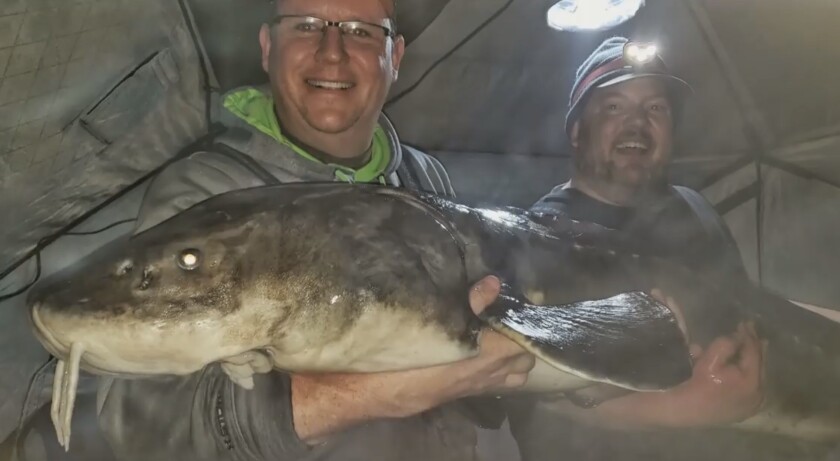Minnesota deer hunting groups and DFL lawmakers last week week unveiled a package of new bills that they hope will pass during the 2019 legislative session and help battle chronic wasting disease.
The effort would allot more state general tax money for the Department of Natural Resources to combat the always fatal deer disease. Currently all of the effort has been paid for by deer hunters though a license fee.
The coalition also wants more money for the University of Minnesota to develop a fast, effective field test for CWD so hunters can find out quickly if the animal they killed is carrying the disease. Researchers want $1.8 million to develop a portable, inexpensive CWD kit. Currently, testing is expensive and takes at least five days to get results.
The lawmakers and hunters also want to crack-down on deer and elk farms that have been hotbeds for CWD outbreaks. They want laws to require double fencing, and higher fences, around deer farms. And they want to require farmers to depopulate - kill all their animals - if any of the herd tests positive for CWD. Now, it's up to the farmer to decide, allowing them to keep other, potentially CWD-positive animals on the landscape. (The only way to test for CWD is after the animal is dead.)
The bills also would seek state money to buy-out deer farms that want get out of the business. And one proposal would impose a moratorium on any new deer farms in the state. There are already some 400 such deer and elk farms in Minnesota.
ADVERTISEMENT
"It's a good package. We have our annual meeting coming up and I'm pretty sure our membership is going to get behind most or all of these,'' said Craig Engwall, executive director of the Minnesota Deer Hunters Association.
CWD has expanded from a single site in Colorado to more than 26 states over the past 50 years, including several deer farms and more than 20 wild deer in southern Minnesota. In southern Wisconsin where the DNR has stopped trying to control the disease, as many as half of all deer shot test positive for CWD. Minnesota wildlife officials are hoping to cull as many deer in the CWD areas as possible to keep the incidence of CWD low and slow the spread to new areas.
CWD is always fatal to deer, elk and moose. One Canadian study shows it can spread to monkeys that are fed CWD contaminated meat. CWD is a rogue protein, called a prion, that can be spread from deer-to-deer but can also spread through soil and even plants. No case of CWD is known to have infected a person, but researchers and health officials recommend against eating a CWD-positive deer. Because the disease is similar to mad cow disease, some public health experts it's only a matter of time before it spreads to people.
Giant sturgeon could set Minnesota record
A 78-inch long sturgeon caught Feb. 9 on the lower St. Croix River may well be the new state record catch-and-release fish.

The sturgeon, caught by Darren Troseth of Jordan, Minn., appears to be 5 inches longer than the 73-inch sturgeon caught last May by Jack Burke of Stillwater, Minn. in the Rainy River. That sturgeon had held the record as largest sturgeon, and largest fish of any kind, ever officially caught and released in the state. In a video Troseth estimates his sturgeon weighed 120 pounds.
Here's a video of Troseth battling the massive sturgeon.
ADVERTISEMENT
Mille Lacs anglers will get some keepers
The Minnesota DNR on Thursday announced they will allow anglers to keep some walleyes on Lake Mille Lacs this summer after three summers of catch-and-release fishing only due to depleted fish populations.
The DNR will release its formal rules for the big lake in March but promised to allow some keepers on a limited basis. Anglers this winter could keep one walleye per day.
Beware of slush
Getting on and off Northland lakes since the recent heavy snows has been challenging at best and impossible at times.
Voyageurs National Park officials warned people Thursday that slush, water and heavy snow drifts are combining to make lake travel very difficult for any vehicles. Minnesota conservation officers report that ATVs, four-wheel drive trucks and snowmobiles all getting mired in the mess on lakes.
The warning is to stay on plowed roads, or well-used trails, and don't wander into new territory. And anyone who has a large ice house on any Northland lake better plan for a major endeavor to get it off by the March 18 deadline for waters north of U.S. Highway 2.
The Superior Hiking Trail needs you
ADVERTISEMENT
The Superior Hiking Trail Association is holding three volunteer winter gatherings in coming weeks. Whether you're a veteran SHTA volunteer or new, the meetings will offer the chance to learn about the association's Trail Renewal Program, hear about expanding opportunities for volunteering, meet the staff and more.
The meetings are set for 9 a.m. to noon March 23 at the Duluth Zoo; 1-4 p.m. March 30 at the REI store in Bloomington; and 9 a.m. to noon April 13 at the Cook County Community Center in Grand Marais.
Go to superiorhiking.org or email Jo Swanson at jswanson@superiorhiking.org . for more information or to register.








